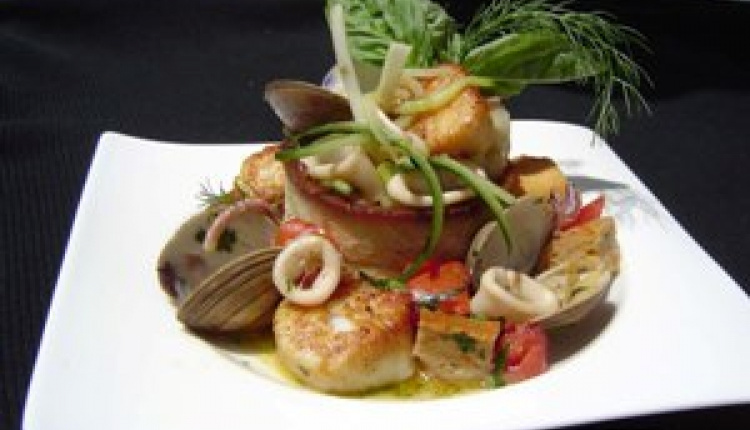Greek Fish And Seafood
- by XpatAthens
- Friday, 20 February 2015

If you take a look at a map of Greece you will see why fish is such an important part of the Greek diet. For such a small country there is a lot of coastline which is why they have such a strong history of seafaring.
Eating seafood goes along with that. Unfortunately the sea which was once so abundant is now barren in places through over-fishing and the Aegean sea simply can't keep up with the demand of a seafood-loving population whose numbers swell during the tourist season. Fish can be very expensive, though there are inexpensive fish available year-round, and these are just as tasty as the expensive ones.
Lets start at the bottom and make our way up the fish chain. The cheapest fish are sardeles (sardines), gavros (anchovies), kolios (mackerel), gopa (bogue) and marides (smelt). Also in this inexpensive category are kalamari (squid), though the frozen variety which is usually, if not always, imported from California, China and other far away places. When kalamari is in season they will tell you on the menu that it is fresh. When cut and fried it is usually frozen but fresh kalamari is grilled or fried whole. In the kalamari family is also thrapsala which to you and I looks like a squid and tastes like a squid but is not a squid. Well maybe it is a squid but they call it thrapsala and like fresh kalamari they serve it grilled or fried whole. In the same family are soupia (cuttlefish) which have shorter tentacles and are never fried but cooked in a stew with tomato sauce. Octopus, which is eaten in small amounts as a meze (snack) can be local or can come from China or the Atlantic. Octopus can be served in a number of ways which I will go into later. In between there are a number of fish whose price depends on supply and include xifia (sword fish), a couple varieties of Mediterranean tuna, and a whole family of bream, trout and even mollusks. Included among them is fagri (red porgy), sargos (sea-bream), lavraki (sea bass), lithrini (pandora), and synagrida (dentex) most of which are either baked or grilled and sold by the kilo.
Then at the top of the fish food chain is astakos (lobster), which can cost a small fortune and is familiar to anyone who has taken a charter sailboat around the islands because many skippers take their clients to the tavernas that serve fresh lobster or the newly popular astako makaronada (macaroni with lobster). Not surprising since skippers often get a commission from the restaurants for any business they bring and a table full of lobster can cost a few hundred euros or more. But here's a tip. Save your lobster-money for home. Mediterranean lobsters are over-rated, under-tasty and few chefs have mastered the cooking of these creatures. They also lack claws which besides the tails are the only edible part unless you want to spend the night sucking bits of meat from legs and antennae. Yes. The Greek lobsters have meat in the antennae. But not enough to justify eating them. In Milos I did see lobsters with claws at the restaurant of the famous Roberto at Da Peppe. "Where did you find lobsters with claws?" I asked him in wonder. "On the airplane" he said in his broken English. They were flown in, maybe from Maine, definitely from somewhere on the Atlantic.
To read more, please visit greecefoods.com


